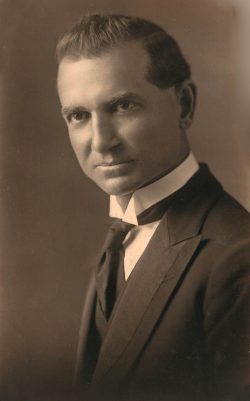Elder Tindall's Model of Gospel Medical Evangelism
“soon there will be no work done in ministerial lines but medical missionary work"
- Counsel's on Health, p.533
You, Will be Tempted to Try this Elder Tindall's Model of Medical Evangelism after reading this...

John H.N. Tindall (1880-1972) was a pioneer in Gospel-Medical Missionary Evangelism.
He successfully won and baptized hundreds of people, had an enormous retention rate among his converts, and trained future church leaders. He was the first person to answer the vision given to Ellen White on February 27, 1910:
“During the night of February 27 a representation was given me in which the unworked cities were presented before me as a living reality, and I was plainly instructed that there should be a decided change from past methods of working. For months the situation has been impressed on my mind, and I urged that companies be organized and diligently trained to labor in our important cities. These workers should labor two and two, and from time to time all should meet together to relate their experiences, to pray and to plan how to reach the people quickly, and thus, if possible, redeem the time”—Manuscript 21, 1910.
In the First five campaigns, there was an average of thirty-six baptisms per campaign. That's not bad. But there was something that continued to bother him. The testimony from Ellen White had called for "Companies" of workers, and his little team of four to six didn't seem like a company. What was he to do, since there was no budget for more workers? In a sense, he did the same thing Jesus did; he recruited volunteers; lots of volunteers.
At the time, there were three paid positions; the evangelist, a medical "helper," and a Bible worker. To this core group, he added one Businessman, one singer, six nurses, and ten general-purpose volunteers. That's eighteen volunteers, a total of twenty-one... living on three salaries and the possibility of donations.
Interesting, But did it work?
The statistics are available for campaigns after the switch to the "company" model. There was an average of one hundred twenty-one baptisms per series. Something was working right. The counsel of God through the little old lady from Elmshaven was, good again!
The Model:
In a document printed up in 1922, Elder Tindall gives a point by point rundown on his approach to a six-month campaign.
Preliminaries: Contact prominent community members to inform them of your work; secure a high-quality hall, or possibly two, if separate facilities are required for health lectures; solicit donations from businesses for materials and supplies to be used in free classes; advertise both evangelistic and health lectures;
Public Meetings: Evangelistic, once a week on Sunday nights; Health, twice a week with diet and healthful foods on Tuesday night, and disease and simple treatments on Thursday nights.
Ongoing Aspects: Monday Morning meeting with all team members for instruction, coordination, and prayer; Question Box service gives public opportunity to ask questions for either public or private answers; Classes offered on Bible topics, Cooking, Home nursing for public and often separately for church members; Free health consultations and treatments given by doctors and nurses; In-home physician or nurse visitation offered free; Baptismal classes and services."
Overall, the plan was working. Perhaps the best statistic was the long-term retention rate which ranged from seventy-five to as high as ninety percent converts.
(This article is expert from the book "D'sozo: Reversing the Worst Evil" by David Fiedler. This book is all about the History of Medical Ministry in Seventh Day Adventism.